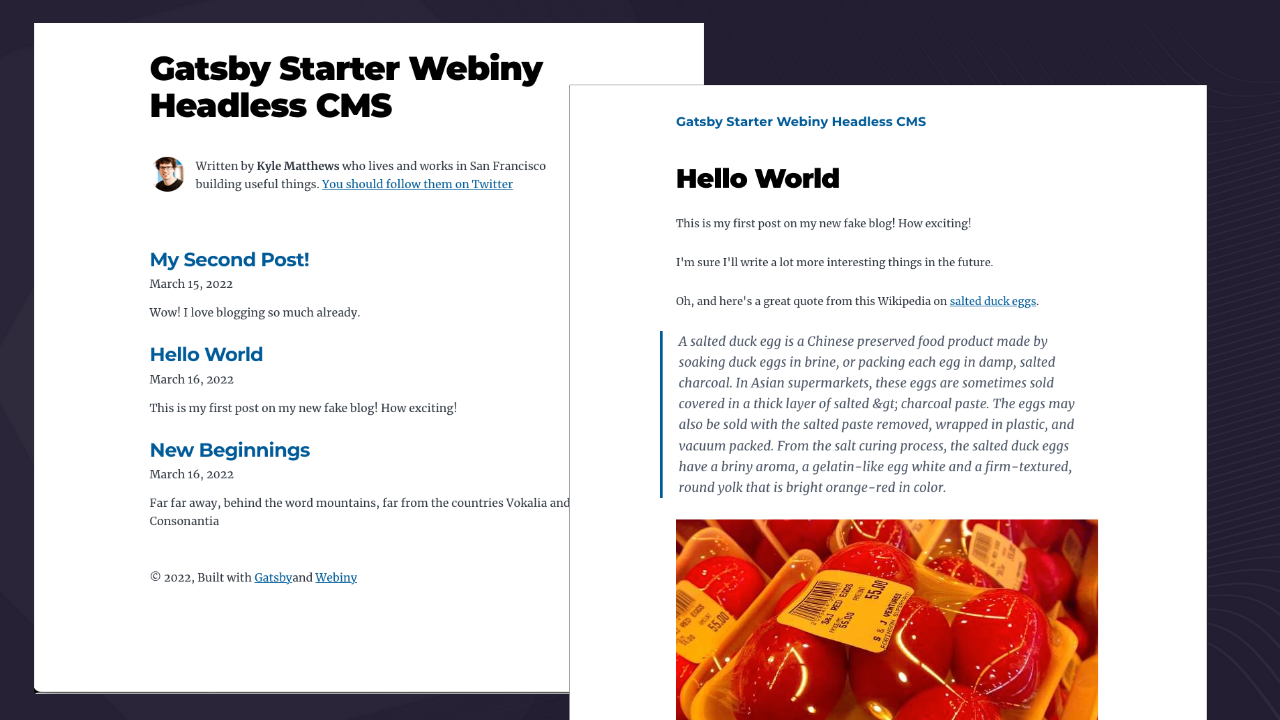In case you missed the news: we launched these two new starters. Here's a quick overview.
There's a hidden cost that comes with the majority of self-hosted headless content management systems: the time you must spend initially setting up the project.
Some require you to install Docker and run its cryptic terminal commands. Others ask you to write code to set up content models. With some you have to install and manage MongoDB or SQL servers on your local machine which may keep running in the background, eating valuable resources even when you're not using your CMS.
By contrast, Webiny have always tried to make the experience of getting started with our Headless CMS as easy and quick as possible.
Now it's easier than ever, especially if you're a fan of Gatsby or NextJS, two of the most popular React site builder frameworks.
Official Gatsby Starter for Webiny Headless CMS
Gatsby revolutionised the way frontend development was done. It wasn't the first static site generator, but it was the first to bring React and JavaScript as first-class browser tools along with a unified data layer for generating pages at build time from remote data by using GraphQL schema stitching.
When you partner Gatsby with Webiny, it's an ideal combination! You can spin up a Webiny instance on your own cloud infrastructure in minutes (instead of spending hours wrangling with Docker, MongoDB or other code-specific setup), define your own models and write content in the browser, and pair it with your Gatsby site at the click of a single button.

Read the Documentation or go directly to the Gatsby code for a 1-click deploy button to Gatsby Cloud.
Official NextJS Starter for Webiny Headless CMS
NextJS has revolutionised web development because of it's flexibility. It implements the React framework, along with a custom router, server-side data fetching and other tools, but is unopinionated and allows you to form your code however you wish. For that reason, it's been the tool of choice for organisations and individuals worldwide.
Now it's even easier to get started with Webiny CMS and Next. Install Webiny on your own cloud infrastructure in minutes, which will avoid any issues with setting up MongoDB / Docker or some other tool on your machine, or writing code to generate content models.

Once you're ready, fetch the content on your NextJS site in minutes. Take a look at the documentation or view the starter for a 1-click deploy button to Vercel.
What Starter Should We Build Next?
We don't want to stop there!
Do you like the view from Vue? Do you like to keep your apps svelte with Svelte? Or perhaps it's time to put Remix into the mix.
Please tell us by tweeting to us or via our Community Slack channel what starter you would like to see next!
We hope you enjoy using these tools to get started quickly with Webiny Headless CMS. Please join our community if you get stuck, or to give us feedback you'd like to offer.

